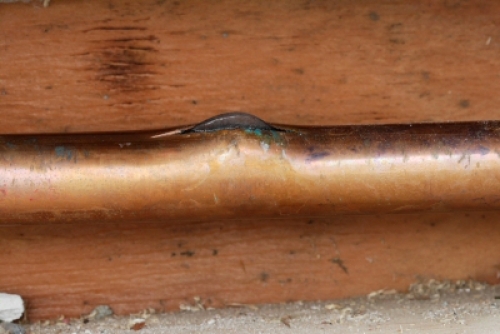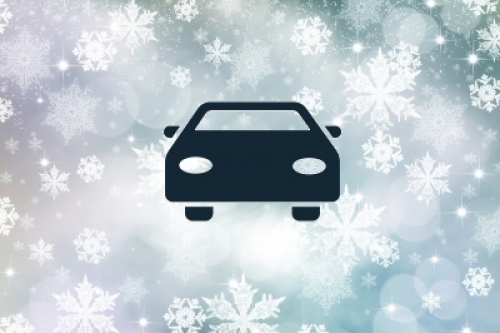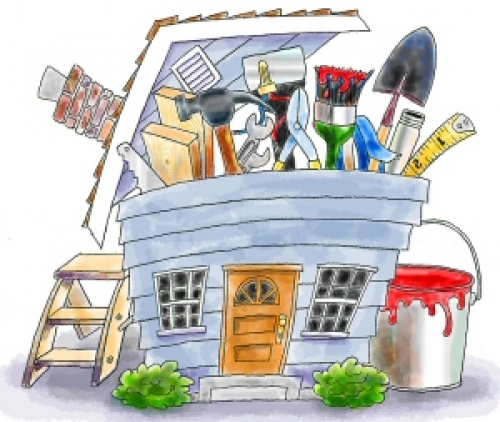 William M. Sparks 1945 - 2023
William M. Sparks 1945 - 2023
My father, William (Bill) Sparks, passed away sadly but comfortably Sunday morning, surrounded by his family. He was a kind and loving man with a heart of gold. There are so many who loved him and will feel this loss – in the business world and far beyond. He would say thank you to all of his small-business customer for their support, and he would wish everyone peace and happiness. I have run the William M. Sparks Insurance Agency for many years now, and I will continue to run it just as my father did and as he would want me to do. On behalf of my family, I thank you all for your kind words, well wishes and support at this time. --- Danielle Sparks
If you have auto insurance, you probably already know that many factors influence your premium, and they include your credit score and driving record, where you live, how you use your vehicle and much more. You might not know, however, that your vehicle's industry safety rating is also a factor.
Each car insurance company analyzes the industry rating and replacement value as well as safety features, safety record and more for each car, truck, van and SUV to determine the risk level of the vehicle. They examine the risk of insuring the vehicle by considering such things as the amount of glass in the vehicle, whether or not it has anti-theft devices, acceptable airbags, anti-lock brakes, traction control, daytime running lights and more. Moreover, the crash test results are significant in their rating process.
All vehicles in the U.S. are evaluated for performance during crash testing (such as the testing performed by the Insurance Institute for Highway Safety). Typically, the higher the crash test rating a vehicle earns, the lower the risk assigned to it. This impacts auto insurance rates.
The Insurance Institute for Highway Safety (IIHS) performs exhaustive testing on all sizes of cars, vans, SUVs and trucks. Each year, the IIHS publishes its list of Top Safety Picks which are based on five criteria:
- Good Frontal Crashworthiness based on a 40MPH frontal offset crash test
- Good Side Crashworthiness based on results when the vehicle's side is struck by a barrier at 31MPH
- Good Rollover Crashworthiness based on testing of the roof strength as compared to vehicle weight
- Good Rear Crashworthiness based ont he structure of the head restraint and a test of the seat and head restraints in the vehicle.
- Electronic Stability Control which is a measure of the degree to which a driver can maintain control when a vehicle might spin out
It is worthwhile to look closely at the crash test rating before purchasing a vahicle. In fact, we advise that you speak to an insurance agent such as those at the Sparks Insurance Agency to find out about insurance rates before signing your next vehicle purchase agreement.
Get more details about Crash Testing by IIHS
Learn more about Auto Insurance
See a list of this year's Top Safety Picks
Find out about insurance rates before your purchase your next vehicle
Not just here in Maryland but throughout the U.S., winter weather has brought hazards, and it is making many people wonder what their homeowners insurance policy would cover in the event of a cold-weather-related peril.
Freezing temperatures can cause a home's pipes to freeze. In some cases, this can lead to bursting of the pipes. Although this is usually covered by homeowners insurance, taking precautions could prevent such damage in the first place. But if pipes do freeze, it is important to know how to thaw them and what steps to take to repair any damage. See Tips to Handle Frozen Pipes in Your Home.
Not sure whether your homeowners insurance would cover damage from frozen pipes? Why not contact our office for a free, no-obligation review of your policy to be sure of your coverage?
All the checklists and plans are underway, and dreams of the wedding march and the honeymoon dance in your head. But does that checklist include the possible changes to your insurance portfolio as you join two lives and become a couple?
Like most newlyweds, you look forward to a nice home, happy, healthy children and a comfortable retirement. As a married couple, you will share a life, but you will also share financial obligations.
If one of you were to die tomorrow, could the surviving spouse afford to pay for final expenses, cover loan and credit card balances, and have the support needed to adjust to such a sudden and devastating life change?
Life insurance could provide that much needed safety net. So be sure that your wedding checklist includes a meeting with your insurance agent and then enjoy the peace of mind that comes with knowing you are covered.
Already have life insurance? Your agent can help you review your policy to be sure it still meets the expanded needs that marriage can bring.
With recent temperatures into the single digits and snow bringing our daily routine to a standstill here in Maryland, Washington DC and Virginia, it’s not only unwise but unsafe to be unprepared for weather problems this winter. Be a smart driver -- brush up on these common sense rules for safe winter driving.
- Even if you didn't prepare for winter before this wet, cold or icy weather by performing a complete vehicle check-up, do it now. Your auto tech will tell you that winter conditions present the greatest challenge to your vehicle’s operating efficiency.
- Move your vehicle into the open to let it warm up so that you avoid exhaust build-up in your garage.
- Check your tires frequently for proper inflation. If your vehicle owner’s manual does not specify, then ask your automotive technician about the proper inflation level.
- Make it a practice to keep your fuel tank at least half-full – both to prevent gas-line freeze and to ensure that you won’t likely run out of fuel in an emergency.
- If possible, don’t drive in bad weather; and if you must drive, try to be well rested and wait until snow plows and sand trucks have cleared the roads.
- When driving on wet, snowy or icy roads, avoid using cruise control or overdrive. Both detract from your full control of the vehicle in possible slippery conditions.
- Use your seat belt and make sure that your seat and mirrors are properly adjusted for best visibility. Wear sunglasses to reduce glare.
- Don’t use your parking brake in cold or inclement weather, if at all possible.
- If you experience skidding on slippery roads, always take your foot off the gas pedal and steer in the direction you want to go to recover from the skid.
One more essential: Keep a Winter Driving Kit in your vehicle and stock it with a bag of sand, salt or kitty litter, ice scraper, paper towels, shovel, snow brush, warning flares, window-washing fluid, a flash light, booster cables, a blanket, gloves and a cellular phone. You’ll have the peace of mind that comes from knowing you’re prepared for an emergency.
The key to safe winter driving is to plan ahead, know your vehicle and adapt to the weather and road conditions.
Make Sure Your Home is Safe Against the Invisible Killer
Carbon monoxide kills hundreds and sickens thousands of Americans every year. The poisonous gas cannot be smelled, which is why many states require carbon monoxide detectors in homes and apartment buildings. A little planning combined with a small investment can protect you and your family from this odorless and invisible killer.
Carbon monoxide fumes can come from many sources, including stoves, faulty furnaces or car exhaust. That’s why you should have all fuel burning appliances installed by professionals - and never use a stove or oven to heat a home. Technically, carbon monoxide is produced when fuels do not burn completely. Whether you use natural gas, liquefied petroleum (LP gas), oil, kerosene or wood as fuel in your home, you are producing carbon monoxide. To detect this poisonous gas leaks consumers should equip their homes with carbon monoxide detectors.
“It is very important to have a carbon monoxide detector in your house. Put one on every floor of the house, especially bedrooms and upstairs,” says Allan Robinson, assistant vice president of claims for Encompass Insurance. “If the detector’s alarm goes off, you should immediately go outside for some fresh air, then call 911 for emergency services.”
Encompass Insurance also recommends that you test your carbon monoxide detectors twice a year to make sure the circuitry is working properly.
The Consumer Product Safety Commission offers more information on the dangers of carbon monoxide and the proper use of carbon monoxide detectors on its web site.
Encompass Insurance offers other tips for staying safe:
- Never leave a car running in an attached garage, even with the garage door open.
- Never use gas appliances such as ranges, ovens, or clothes dryers for heating your home.
- Carbon monoxide detectors are made for boats and recreational vehicles as well, so keep this in mind as you prepare for summer.










